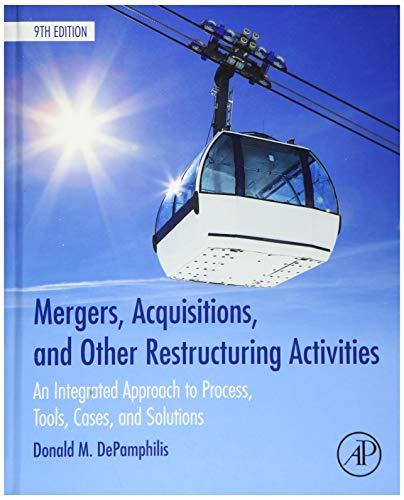DowDuPont would be the second largest chemical company in the world, behind BASF of Germany, with more
Question:
DowDuPont would be the second largest chemical company in the world, behind BASF of Germany, with more than \($92\) billion in annual revenue. In an unusual display of financial restructuring linked to the merger, the deal is to be followed by a breakup of the new company into three businesses: agricultural chemicals, specialty products, and materials. The split-up of the new firm into three publicly traded companies is expected to increase their focus on their served markets and in turn improve their competitiveness, sales growth, and profit margins due to expense reduction.
Both firms are among the best known brands in the chemicals industry: Dow for plastics and agricultural chemicals and DuPont for such technical innovations as Kevlar and Teflon. DuPont has suffered from intense competition in Agriculture from Monsanto, especially in its corn seed business. DuPont’s patents have kept a number of its products proprietary and profitable. In addition to agriculture, the firm’s business portfolio includes electronics and communication, complex materials, and safety and protection. Dow Chemical’s business portfolio is divided into two groups: specialty and basic chemicals. The firm has increased its focus on specialty chemicals that carry higher prices than the highly commoditized basic chemicals whose profitability is subject to the volatility of the energy markets.
The boards of both Dow and DuPont were under severe pressure by activist investors unhappy with the firms’ subpar financial performance to increase shareholder value. In 2014, Dow agreed to appoint four independent directors to resolve a dispute with Daniel S. Loeb, CEO of hedge fund Third Point. In 2015, DuPont successfully thwarted a challenge to their board’s composition by Nelson Peltz, CEO of Trian Fund Management. In both instances, Mr. Loeb and Mr. Peltz argued that the firms needed to trim costs and improve operating efficiency as well as to buy back shares and increase dividends. Win or lose, the activists had made their voices heard.
Discussion Questions:
1. Speculate as to why the deal was structured as a merger of equals. What are the advantages and disadvantages of such a structure? Be specific.
2. What are the key assumptions DowDuPont is making in arguing the merger followed by the spin-off of three businesses makes sense?
3. What is the form of payment and the form of acquisition used in this deal? What are the advantages and disadvantages of the form of payment and acquisition used in this deal?
4. In the deal, Dow shareholders will receive a fixed exchange ratio of 1.00 share of DowDuPont for each Dow share, and DuPont shareholders will receive a fixed exchange ratio of 1.282 shares in DowDuPont for each DuPont share. Dow and DuPont shareholders will each own approximately 50% of the combined company, excluding preferred shares. Common shares outstanding at Dow and DuPont at the time of the announcement were 1.160 and 0.876 billion, respectively. Using this information, show how the post-closing ownership distribution can be determined. How might these fixed SERs have been determined during the negotiation of the deal?
5. Dow’s price per share on December 11, 2015, was \($54.91\) and DuPont’s was \($74.55.\) Dow shares outstanding were 1.16 billion and DuPont’s outstanding shares were 0.876 billion. Assume anticipated annual cost synergies are \($3.0\) billion in perpetuity and DowDuPont’s cost of capital is 10%. What is DowDuPont’s total market cap excluding synergy? What is the market cap including synergy using the zero-growth method of valuation.
Step by Step Answer:

Mergers Acquisitions And Other Restructuring Activities
ISBN: 9780128016091
9th Edition
Authors: Donald DePamphilis





